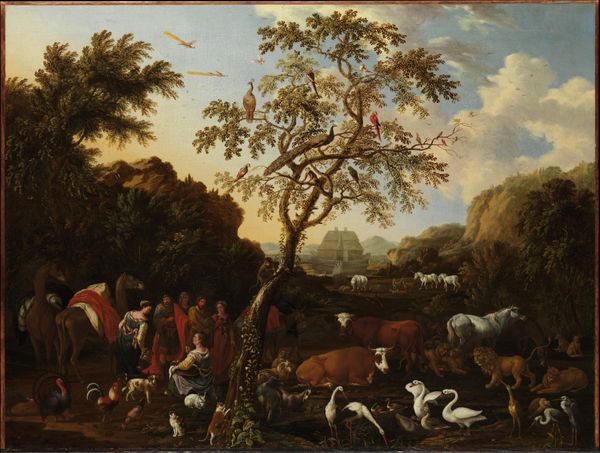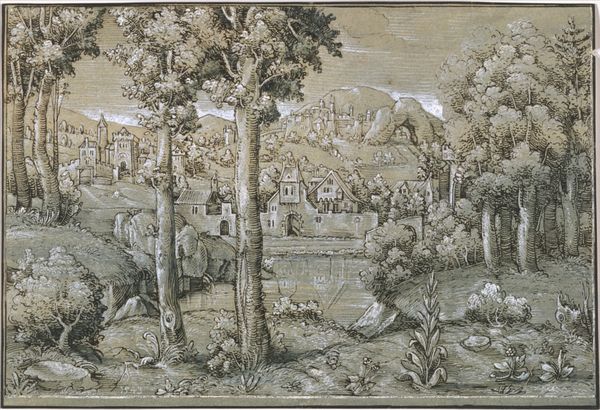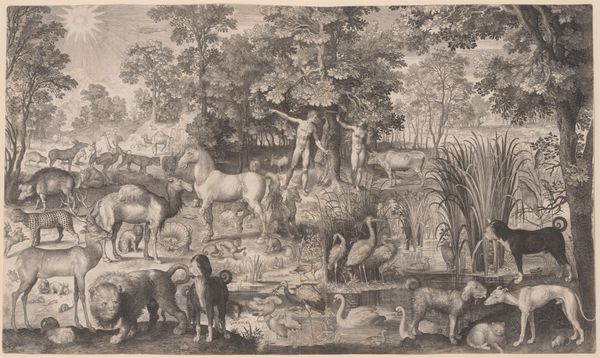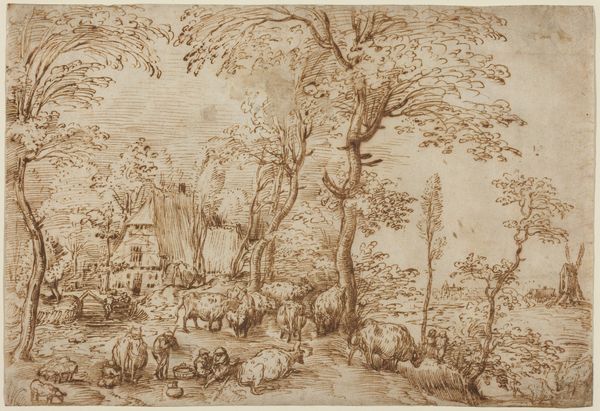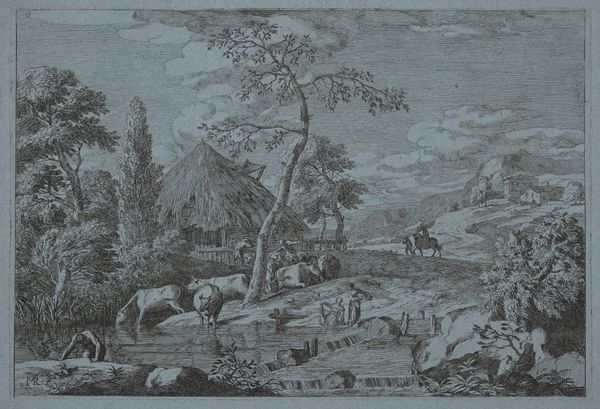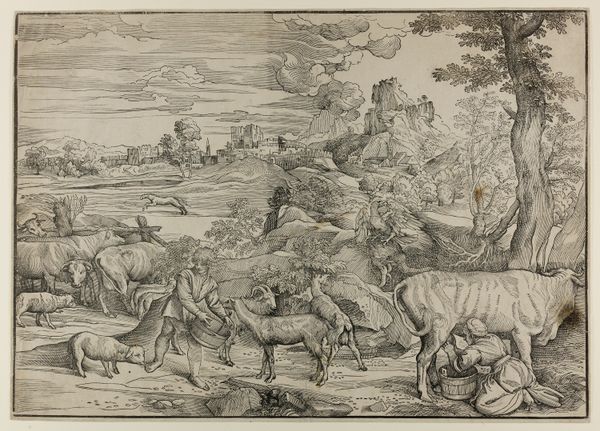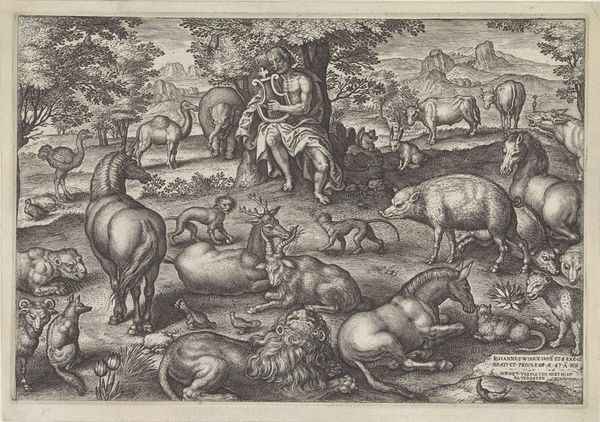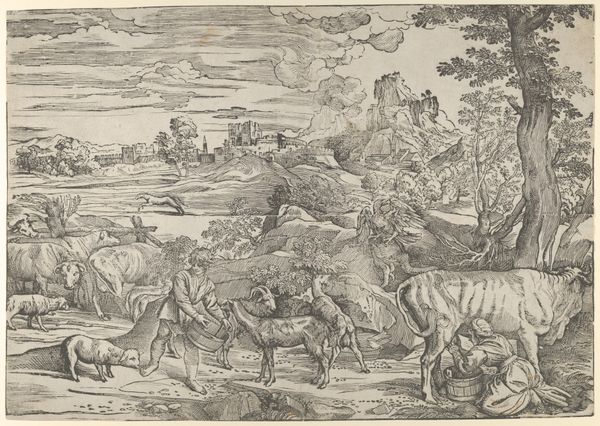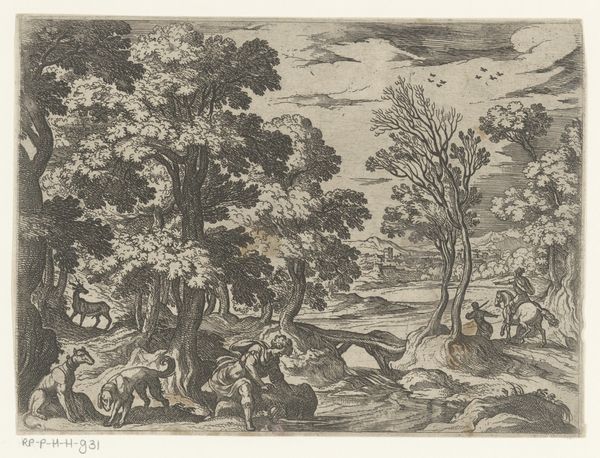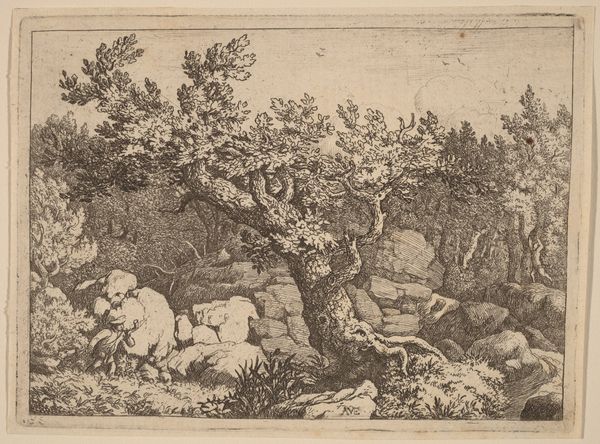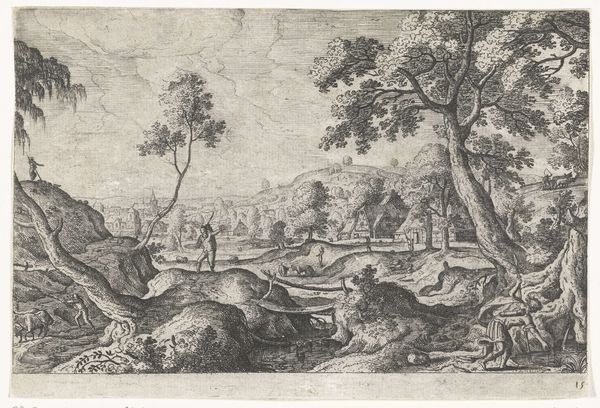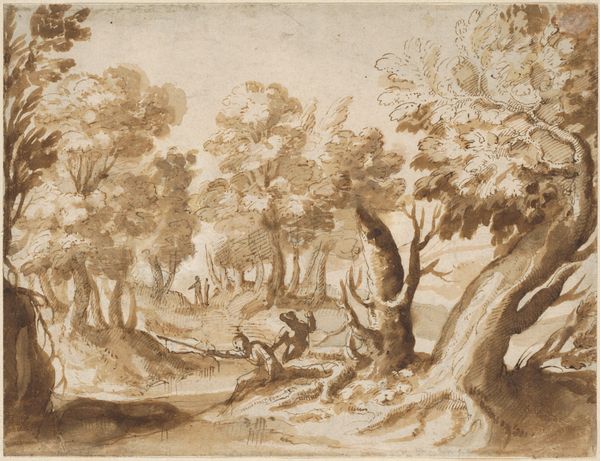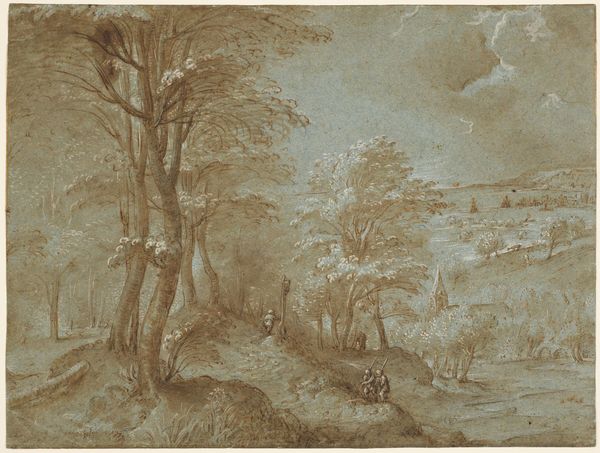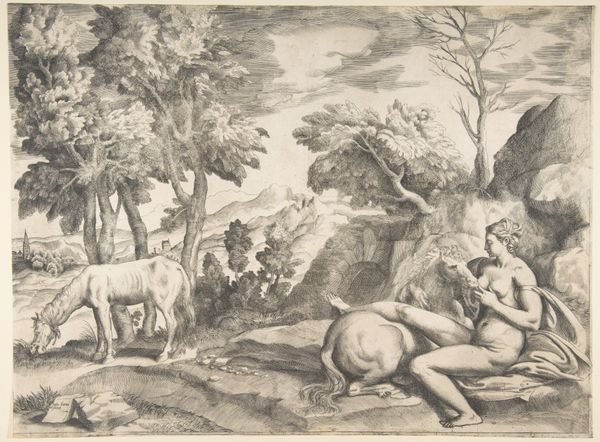
painting, oil-paint, canvas
#
baroque
#
painting
#
oil-paint
#
landscape
#
figuration
#
canvas
#
history-painting
#
realism
Dimensions: 64.5 cm (height) x 82.5 cm (width) (Netto), 74.4 cm (height) x 91.6 cm (width) x 4.2 cm (depth) (Brutto)
Franz Rösel von Rosenhof painted "Paradise before the Fall of Man," during the 17th century, a period marked by Europe’s religious and scientific transformations. Here, the artist situates the biblical narrative of Eden within a Northern European landscape, reflecting the intersection of religious belief and the burgeoning scientific interest in the natural world. Consider how Adam and Eve are depicted at a remove, almost as observers within their own paradise. This distance subtly shifts the focus from the human drama of temptation and fall, to an emphasis on the natural harmony of the animal kingdom. The artist's choice to include such an expansive bestiary speaks to the cultural fascination with cataloging and understanding the world. Yet, the painting's idealized vision also invites us to reflect on the loss of innocence and the shift from a world of harmony to one marked by human consciousness and potential discord. Ultimately, this vision of paradise is less a depiction of a lost world and more a poignant reflection on humanity’s relationship with nature, knowledge, and the self.
Comments
statensmuseumforkunst almost 2 years ago
⋮
The two paintings show what happened when Adam and Eve ate from the Tree of Knowledge. From all creatures living peacefully side by side in plenty, to a barren world ravaged by murder and mayhem. These are moral object lessons; not zoology. Obviously the artist did not study living animals, but copied older sources instead. In the depiction of Earth, animals from every corner of the world mingle with imaginary creatures. In front of the two paintings learned spectators could amuse themselves by seeing how many they might name and recognize from books and other popular depictions. On the threshold of the modern era, belief in Christian traditions had become more abstract. Perhaps von Rosenhof's paintings do not so much convey a religious message as they provide a humorous illustration of the philosopher Thomas Hobbes' (1588 1679) thesis that without sovereign government we risk a war of all against all.
Join the conversation
Join millions of artists and users on Artera today and experience the ultimate creative platform.
